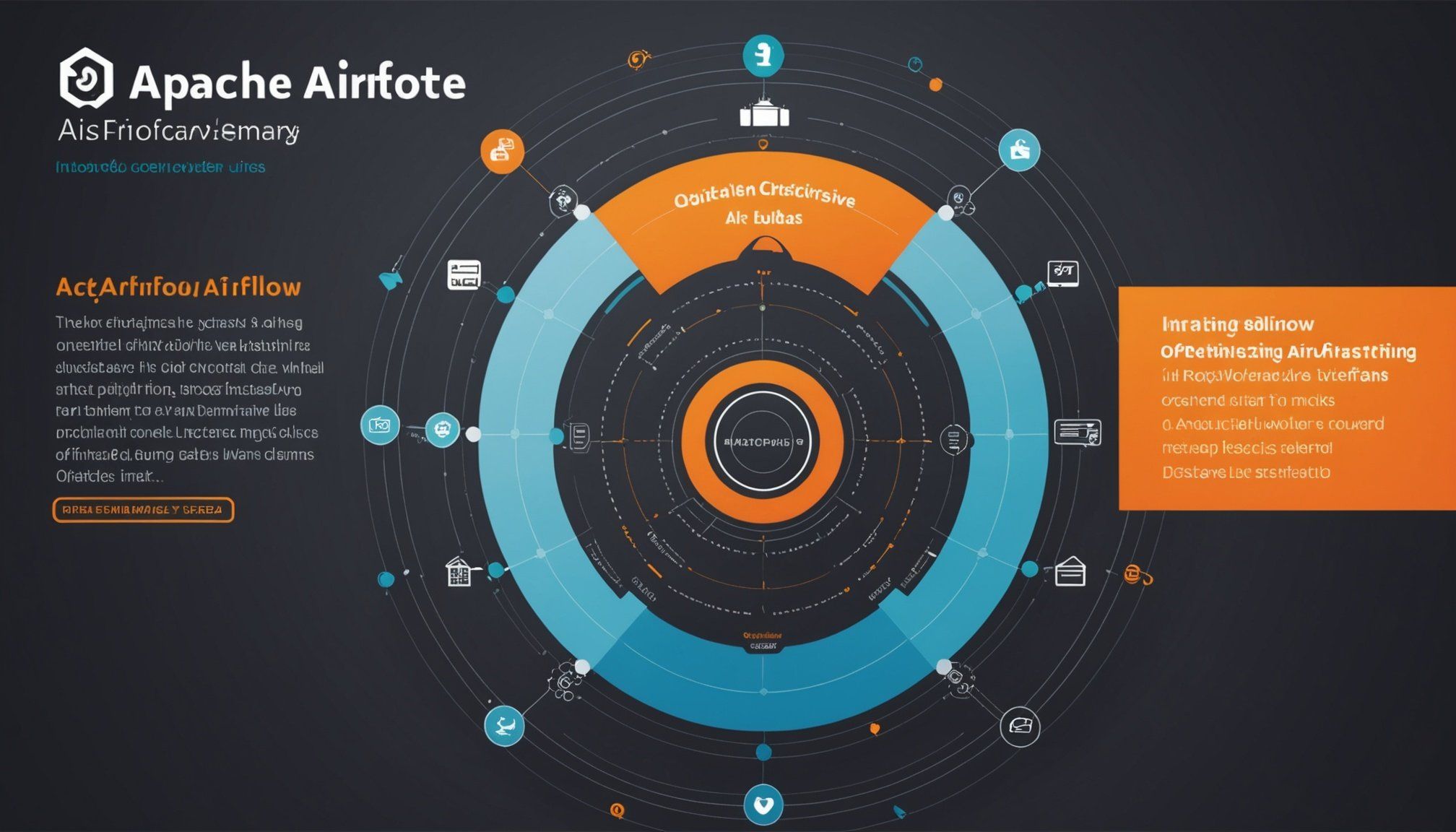Overview of Apache Airflow
Apache Airflow is a potent open-source tool designed to facilitate and automate data workflows. It serves as one of the premier orchestration tools used by data engineers worldwide. Airflow’s primary function is to manage the complexities of workflow management, ensuring that tasks occur in the correct sequence and at designated times. This feature makes it invaluable in environments where data processes need smooth automation and coordination.
Among its key features, Apache Airflow provides a comprehensive user interface for easy visualization and monitoring of workflows. It also supports complex workflow orchestration through Directed Acyclic Graphs (DAGs), allowing users to define and schedule intricate task sequences. Its extensibility is notable, with an architecture that supports plugins and custom code, distinguishing it from other orchestration tools in the market.
This might interest you : Unlocking Success in Cross-Platform Mobile Development: Key Strategies for Exceling with Xamarin
Common use cases include automating ETL processes, data pipelines, and even batch processing tasks. Apache Airflow is not just a data workflow tool; it’s a critical component in data engineering, making it pivotal for data integration, transformation, and analysis workflows. Mastery of its features can lead to significant improvements in efficiency and effectiveness in data-driven projects.
Setting Up Apache Airflow
Establishing Apache Airflow begins with meticulous environment setup to ensure a smooth operation. Depending on the operating system, there are specific steps to consider. For instance, on Linux, installing Airflow can efficiently be managed using pip within a virtual environment, an essential initial setup that ensures dependency isolation. On Windows, while the process is similar, it often requires additional configurations.
Also read : Mastering Data Lakes: The Ultimate Guide to Harnessing AWS Glue and Amazon S3 for Success
A critical component of your environment setup is attending to configuration settings. Fine-tuning these settings is key to achieving optimal performance. Airflow’s configuration file, airflow.cfg, is where parameters such as parallel task execution and customization options reside, accommodating system-specific needs.
In addition, specifying environment variables plays a pivotal role in tailoring Apache Airflow’s workflow operations. These variables, such as AIRFLOW_HOME, are intrinsic for directing Airflow’s command-line interface and scheduling services.
Before embarking on the installation, ensure all required dependencies are satisfied. Using a requirements file makes this process straightforward, listing all modules Airflow needs for successful execution. Attention to these details provides a strong foundation for using Airflow effectively.
Core Concepts and Architecture
Understanding the Airflow architecture is pivotal for leveraging its full potential in orchestrating data workflows. At its core, Airflow’s architecture comprises three main components: the Scheduler, Workers, and the Web Server. The Scheduler monitors task queues and allocates tasks to Workers, where they run. Workers perform the actual task execution, while the Web Server provides a user interface for visualising and managing workflows.
Central to Airflow’s functionality is the use of Directed Acyclic Graphs (DAGs). DAGs are collections of tasks organized in a specific order, defining how tasks are executed. They are non-circular, ensuring tasks only progress in one direction, critical for maintaining task sequence integrity. DAGs allow users to specify dependencies, detailing which tasks must complete before others start, thus orchestrating complex workflows effortlessly.
Defining tasks and their dependencies within a DAG involves simple yet flexible Python scripts. Airflow’s design allows for intricate task chains, enhancing workflow management vastly. By customizing task parameters, like execution frequency and conditions for execution, users can fine-tune DAG operations to meet diverse data processing needs efficiently.
Creating and Managing DAGs
In the realm of Apache Airflow, DAG creation forms the backbone of task management and scheduling. A Directed Acyclic Graph (DAG) is a collection of all the tasks you want to run, organized in such a way that the dependencies are straightforward and non-circular. When you set up a DAG in Airflow, you’re essentially crafting a blueprint for your data workflow, allowing tasks to execute in a specified order.
To create a simple DAG, one begins with basic Python scripting. Define your tasks and their relationships clearly. For instance, a typical simple DAG might involve data extraction, transformation, and loading (ETL) processes. By breaking down tasks into these parts, Airflow enables effective task automation and seamless workflow execution.
Techniques for managing and monitoring DAGs involve utilizing Airflow’s user interface to inspect and supervise task progress. The interface provides a clear view of active DAGs, task durations, and dependencies.
Utilizing built-in scheduling options optimizes task execution by allowing DAGs to run at specific intervals. These schedules can be set using cron expressions, supporting precise time-based task automation. Mastery of these features ensures efficient data workflow orchestration.
Best Practices for Workflow Optimization
Optimizing workflow performance in Apache Airflow involves strategic practices that cater to efficiency and reliability. Start by ensuring tasks are properly defined and broken into modular components, aiding maintainability and minimising complexity. This modular approach not only simplifies debugging but also enhances the DAGs’ adaptability to future changes.
Performance tuning is another essential aspect. Set up your DAGs to make the most of available resources by adjusting Airflow’s concurrency and parallelism settings. Properly configuring these settings helps manage task loads and prevents system bottlenecks, promoting smoother operations.
Avoid common pitfalls, such as hardcoding values and overly complex task dependencies, which can hinder performance. Instead, use variables and templates, offering flexibility and ease of updates across workflows.
Implement detailed monitoring and logging practices using Airflow’s user interface and configuration capabilities. This ensures that any issues are swiftly identified and resolved, maintaining the health of your workflows.
Finally, always use best practices for error handling, such as implementing retry policies and defining task timeouts, to ensure your workflows remain robust and resilient in production environments.
Advanced Airflow Features
Unlocking the potential of Apache Airflow involves mastering its advanced features like dynamic workflows. These enable flexible adaptation to changing data conditions by adjusting tasks at runtime. Such configurations allow workflows to be tailored dynamically, enhancing their robustness and adaptability.
Another powerful aspect of Airflow is its support for custom plugins. Creating these plugins extends Airflow’s default capabilities, allowing personalized functionality. This customization can be crucial for addressing unique business needs or integrating specialized tools.
Airflow also excels in integrations with external services and tools, which can significantly enrich data processing pipelines. From linking with databases and cloud services to connecting with data visualization platforms, these integrations streamline and enhance the data workflow, allowing seamless data transfer and analysis across systems.
For those aiming to leverage these features, begin by exploring Airflow’s API capabilities. Understanding how to utilize its plugin architecture and integrations will significantly broaden the tool’s applicability. This approach ensures that data workflows are not only automated but also enriched with functionalities that align with contemporary data processing demands. Flexibility in integration allows Airflow to adapt to and enhance varied data architectures efficiently.
Troubleshooting Common Issues
For an effective Airflow troubleshooting, it’s crucial to identify recurring problems and apply targeted solutions. Resolving error handling efficiently within workflows is key. Common errors include misconfiguration of DAGs and task failures. Use Airflow’s detailed error logs to pinpoint root causes swiftly. These logs provide insights into where and why failures occur, enabling precise corrective measures.
Diagnosing performance issues often involves recognising bottlenecks in your data processing pipeline. One approach is to review Airflow’s logs and metrics, which reveal slow-running tasks or excessive resource consumption. Adjusting task concurrency and optimizing DAG design can mitigate these issues. For example, avoid excessive task dependencies, which can result in unwanted waiting times.
To enhance error management, implement automated retries and fallback strategies in your tasks. Setting appropriate retry policies and configuring task timeouts ensures robust execution, even amidst failures. Moreover, regularly update Airflow and its dependencies to leverage improvements in performance and reliability. This proactive maintenance strategy keeps workflows resilient against common operational hiccups.
Troubleshooting Common Issues
Effectively managing Airflow troubleshooting involves honing in on specific problems and applying precise solutions. One common issue is task failures due to misconfigured DAGs or environment variables. Airflow’s comprehensive error logs provide a detailed view of failures, helping identify the exact points where disruptions occur. By examining these logs, users can correct misconfigurations and rerun tasks smoothly.
Performance issues can manifest as slow execution or system bottlenecks within your workflow. These can often be traced back by analyzing Airflow’s logs and metrics, which reveal which tasks consume excessive resources or suffer from extended runtimes. Mitigating these issues involves optimizing your DAG design and configuring Airflow’s concurrency settings to fit your resource capacity. Reducing unnecessary task dependencies can also help eliminate delays.
Incorporating retry policies and task timeouts bolster error management, enabling workflows to remain operational despite hiccups. This involves setting retry limits and defining fallback strategies for tasks, thereby improving overall robustness. Lastly, maintaining up-to-date Airflow versions is essential for overcoming known issues and benefiting from enhancements, ensuring your workflows consistently perform optimally.
Future Trends and Developments in Apache Airflow
Apache Airflow continues to evolve, with significant advances anticipated in the realm of data orchestration tools. Emerging trends suggest a deeper integration with cloud-native technologies, enhancing Apache Airflow‘s scalability and flexibility. The push towards serverless computing may lead to reduced operational overhead, allowing users to focus more on workflow crafting than infrastructure management.
Predictions for Apache Airflow include more intuitive user interfaces and enhanced automation capabilities. Upcoming features might incorporate machine learning, offering adaptive DAG configurations based on workload patterns, ultimately optimizing data workflows dynamically. These advancements aim to streamline the orchestration process, further solidifying Airflow as a vital tool in complex data engineering frameworks.
The Apache Airflow community plays a pivotal role in driving these enhancements, fostering innovations through collaborative development and open-source contributions. New plugins and integrations are regularly introduced, keeping pace with industry trends and expanding the tool’s applicability across diverse sectors. Community-driven growth ensures Airflow remains at the forefront of orchestration technology, maintaining its relevance and appeal in the ever-evolving landscape of data management.











